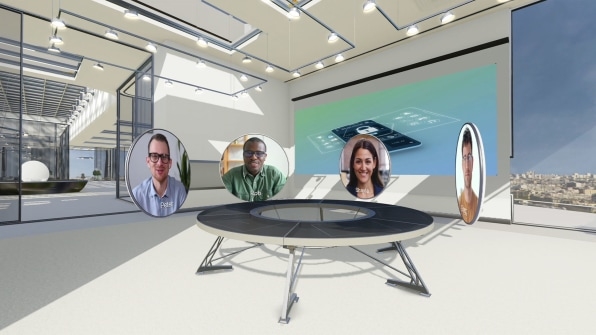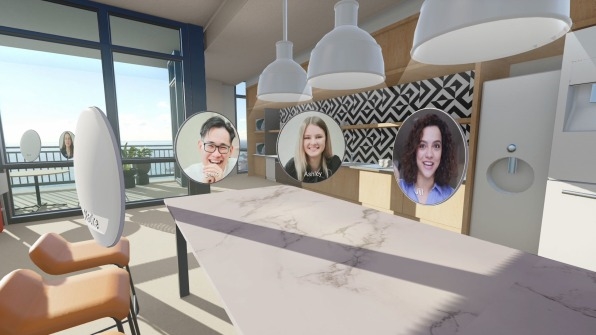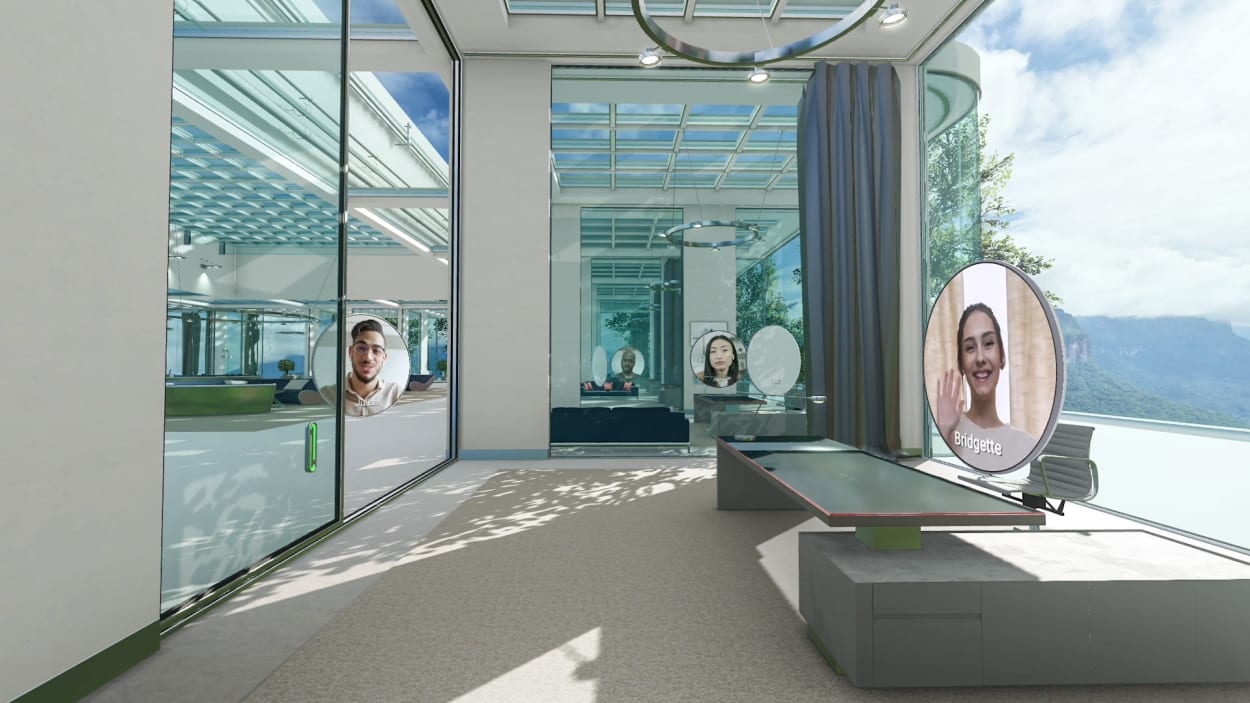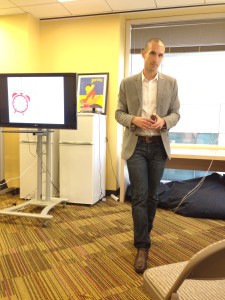Imagine a world in which every detail in your office, down to the assortment of items on your desk, is available from the comfort of your home. Now, that possibility is not just imaginable, but entirely possible through Katmai, a virtual communications platform launching today that creates the office experience right in your browser.
As soon as you launch Katmai, everything down to the elevators and hallways mirrors exactly those of an actual office environment. From conference rooms to kitchen areas to plants in the corner, the customizable office looks enough like what you might find yourself entering after a 30-minute subway ride into the crowded city.
Mediating an RTO compromise
After three years of development, Katmai launched today as a virtual mediator in the return-to-office debate. Companies that have RTO mandates have had varying degrees of success, causing a rift between managers and workers (even prompting some CEOs to completely lose their cool) and shedding light on the costs of working in-person. On the other hand, working in an office environment fosters connections that motivate employees to return.
The concept behind the platform is simple: Katmai aims to bring the debate between employers and their teams to a compromise, albeit one where employees get to stay at home while still getting a somewhat authentic office experience virtually.

According to Maximize Market Research, the virtual office platform market is expected to reach $137 billion by 2029. Research compiled by Zippia shows that 74% of U.S. companies are using or planning to put in place a hybrid work schedule, while a recent survey from CBRE of 185 companies with offices in the U.S. revealed that more than half (52%) planned to decrease the size of their offices within the next three years.
Katmai recently raised $22 million in Series A funding to assist in the development of the platform. Founder Erik Braund says he began developing the idea in 2020 when the pandemic derailed in-person operations.
‘It’s an always-on thing, and it’s a third place to be together’
“Our goal isn’t to be meeting software. Our goal is to say, ‘Hey, this is a concurrent session. It’s an always-on thing, and it’s a third place to be together,’” Braund says, referencing the concept of a social setting that is separate from home and work such as a café or park.
Katmai currently has over 40 employees working across the world, from Alaska—the inspiration for the name of the company and a nod to Braund’s home state—all the way to the Netherlands.
When developing the software, Braund says it was important to have the workspace live directly in a web browser rather than in an external app or headset. And instead of using avatars (as in Meta’s metaverse), the program uses your camera so people can see your face as you walk around the office and enter meetings.

While the format somewhat mirrors that of a video game, Braund says he didn’t want to market it only as such to make it more widely appealing. Users can create custom experiences, from a tropical getaway to an office set under the Eiffel Tower in Paris.
Once in the office, practically all of the features of both an in-person office and a Zoom or Microsoft Teams-like meeting are available, from being able to close doors and host guests to sharing your screen and using a chat feature with others in the space.
The platform also allows for the spontaneity of an in-person environment, where someone could be walking down a hallway and bump into someone to chat for a few minutes. And just like in an office, you can see who’s in the conference room next to you, but you can’t hear their conversation.
“The underlying fundamental technology that we created was the Katmai engine that merges the 3D world and the audio video conference,” Braund says. “So that’s like the text, the engine, the platform, the invention. That’s what we’ve spent the last three years doing, making it work well and making it work on a variety of devices.”
But the market for these so-called metaverses is not all that small, either. It’s already populated by companies such as Elevated Environments, WorkInSync, Teemyco, Kosy Office, and others.
Currently, Braund says they’re narrowing their focus to younger and smaller companies, especially because the platform eliminates huge costs from investing in a physical space. Braund also says they’ve noticed the millennial and Gen Z populations responding especially positively to Katmai.

Zoom fatigue vs. the virtual office
It’s still unclear how effective or compelling these RTO alternatives will actually be in the workplace. Gleb Tsipursky, CEO of Disaster Avoidance Experts, tells Fast Company that his experience with clients has shown lots of “Zoom fatigue” and reluctance to be on camera, adding that it’s difficult to predict whether this model will be compelling enough for daily use.
“The launch of this detailed virtual office platform marks an interesting point in the ongoing remote work debate,” he says. “[But some] don’t like to feel surveilled when they go about their work without a moment of privacy to blow their nose or fix their makeup while at their home office. My prediction is that it will be a struggle to get employees—especially the introverts—to systematically use their cameras this way.”
He says companies must acknowledge and solve these limitations in order to maintain a healthy work environment, noting that by moving to a virtual space, we risk losing aspects like non-verbal cues or spontaneous conversations that often spark innovation.
Braund says they’re continuing to improve upon features of the platform as customers respond with more requests, noting that, at the end of the day, the company is aiming to deliver a complex idea in a simple way.
“We have culture. We have a team. We’re here together. We have all these moments. We don’t have to schedule a zillion meetings. We can have the two-minute conversations with people that are here,” Braund says. “What an incredible way to interact.”

(6)






